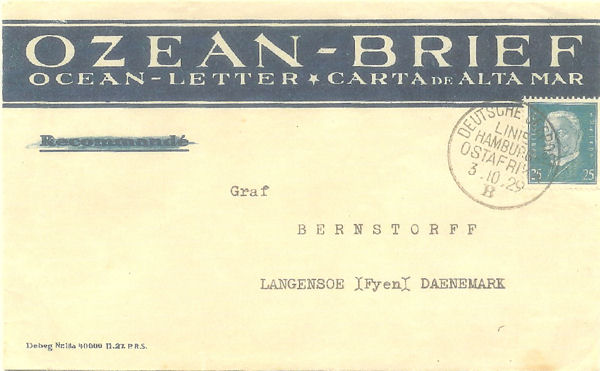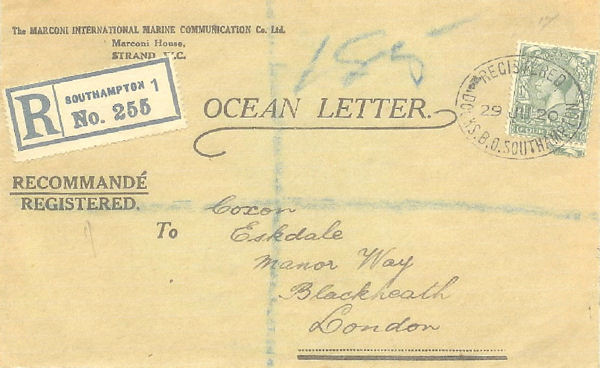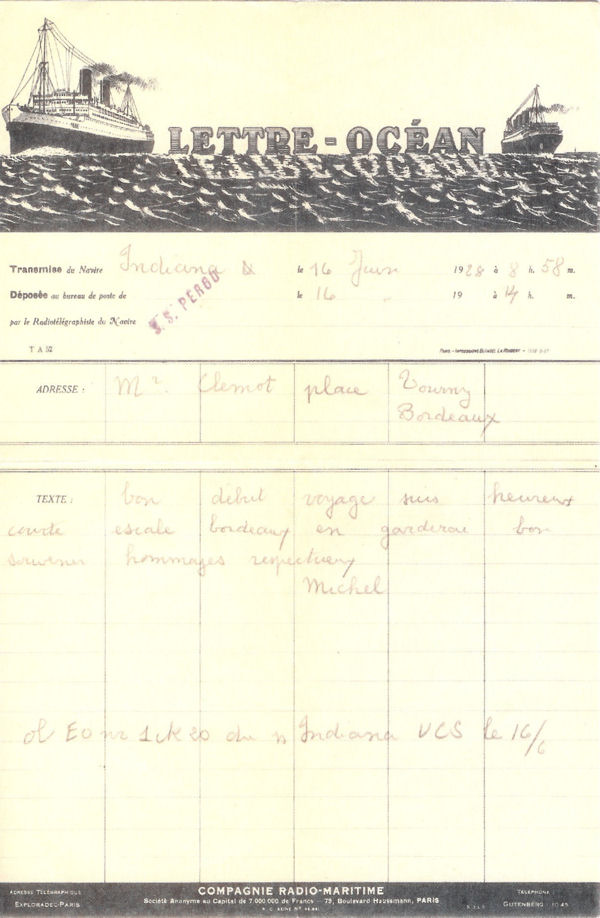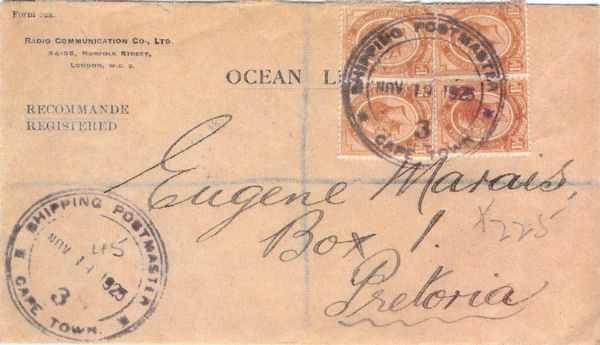Seapost -> Ocean Letters
Ocean Letters
By Roger Hosking

Posted in 1929 from on board a German vessel receiving a Deutsche Seapost cancel.
What is an Ocean Letter? Well, it is not the same as a ship letter, or a paquebot letter, or a seapost letter. Rather, think "telegram", since the system originated in the discovery of radio as a means of communication at the end of the 19th. Century. At the time, sea voyages were often long and lonely, and radio soon became a vital part of the maritime industry, pioneered by such wizards as Marconi (in UK) and Slaby (in Germany).

Posted registered in 1920 in Southampton at the Docks Office.
The Ocean Letter was a service designed to shorten considerably the time taken for ship passengers to communicate with friends and families back home. In order to achieve this the passenger would write his message and hand it in to the radio officer of the ship, who would then transmit it by short-range radio to a second ship going in the opposite direction. The receiving ship would then transcribe the message on to a special form, put it in a special type of envelope, and mail it to destination on reaching landfall.

CRM message form type M16 - used on the S.S. PERGO.
The system was first operated on board German ships in 1911, and British ships a year later, and examples of ocean letters of these two nationalities are the most often seen. Types from French, Dutch, Italian, Scandinavian, and US shipping are also known but they are scarce.
Peak usage of the system was reached in the 1920s, but declined after the introduction of ship letter telegrams in the early 1930s. It did, however, survive the end of WW2, and a few examples are known from the late 1940s.

Registered Ocean Letter dated November 24th 1925 with a superb SHIPPING POSTMASTER - CAPETOWN postmark added.
Bibliography:
The full story of this fascinating, eclectic, and short-lived service can be found in the following:
"An Introduction to Ocean Letters", Roger Hosking, TPO & Seapost Society, 2002
"Ocean Letters - A Sequel", Roger Hosking, TPO & Seapost Society, 2006
Overview article published in GSM: Ocean Letters: Communications From On Board Ship
Ongoing Research:
Member Otto Kjærgaard is preparing a catalogue of Ocean Letters. Input from members and others is sought to provide a comprehensive listing. Review draft chapters here and add your input.
Post Script:
Radio-Telegramm forms used on Germany’s Zeppelins
An interesting article in The March 2018 edition of London Philatelist by Cheryl Ganz brings to our attention the use of DEBEG radio services to send and receive Graf Zeppelin and Hindenburg passengers’ messages while on route between Germany and the USA in 1936 and 1937, exactly akin to Ocean Letters sent from on board ships at sea. Ganz’s article describes the operation and illustrates rare examples of used and unused message forms and carrier envelopes used on board. The paper forms were sent from the zeppelin’s radio room to the purser’s office by means of pneumatic tube. The designs were unique to the airships, but quite similar to the better known Ozean Brief used on German Liners .
Reference: Ganz, CR: Callsign DEKKA: Zeppelin Hindenburg Telegram Mail by Pneumatic Tube, London Philatelist, Vol 127 No 1453, RPSL, March 2018
DEBEG: Deutsche Betriebsgesellschaft fur drahtlose Telegraphie mbH, Berlin: a subsidiary of the German Telefunken Company set up to operate its maritime radio business. German ships on the north-Atlantic run introduced an Ozean Brief service in September 1911.

